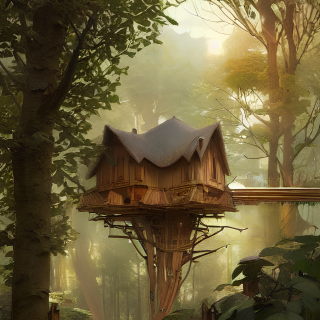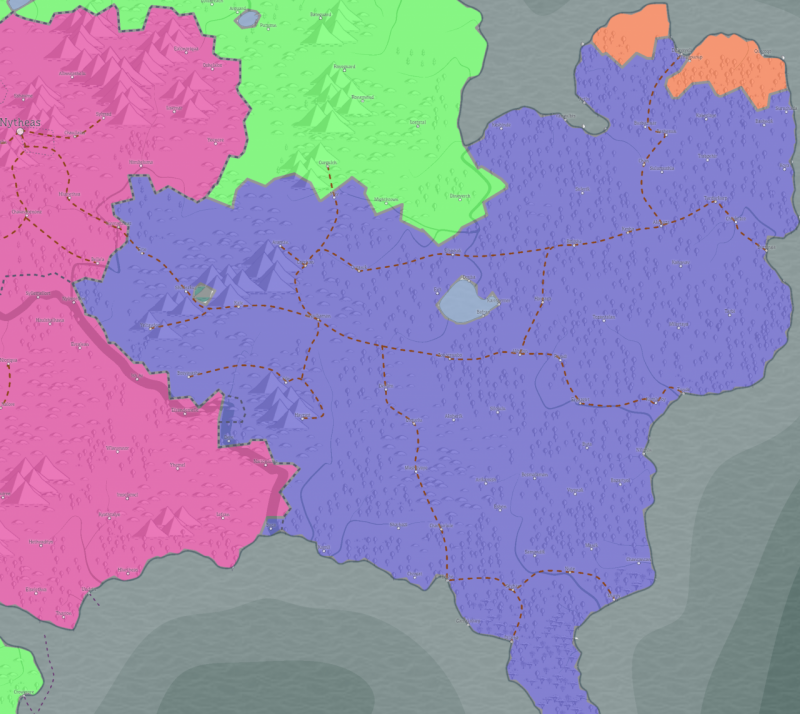Fast Facts
- A major cultural block in the north east of Eleath
- Can seem unwelcoming to outsiders with face coverings and a strict societal heirarchy
- Probably the fairest income distribution and best welfare for the unfortunate anywhere on Eleath
Quick Reference
- Demonym: Keesian
- Languages: Keetan, Common (Only known by some citizens)
- Justice: The Kes (see below), or their appointed Judiciary Sheriff
- Policing: The Arm of Justice
- Military: The Arm of Justice
(Note that the police and military are the same body)
Hidden Yet Honest
The most obvious feature of the Keesal culture to outsiders is that all adults and older children wear a face covering in public.
A little more familiarity with Keesal ways reveals that it is considered highly rude to show your face in public as to do so is felt to be an act of intimate friendship. Not wearing a face covering in Keesal society would be like walking down the street in your underwear elsewhere. The tradition of wearing a face covering arose in a time when a great plague swept the land, and the masks were worn in an attempt to slow the spread of the "bad airs" considered to be propagating it, but after the epidemic was over the tradition became permanently embedded. But there is more to Keesal society than this visible difference.
For example, among the Keesal it is a strict moral requirement to always tell the truth (although sometimes it may be told “economically”.) Many have speculated that this requirement has arisen to counter the lack of social cues when faces are covered. This is taken as sacred at and between all levels of society, and if someone lies to you, that’s a matter of honour: You rip off their facial covering and challenge them to a dual! This requirement for strict truthfulness only applies to other Keesal or those respecting their culture, however, and if someone has no face covering they are fair game for whatever lies are convenient! The unconscionably rude outsider deserves all they get…
Species and Relationships
The Keesal are mostly humans and dwarfs, although there is a sizable goblin minority and a smattering of other species. While there are equika living in the Keesal (there are jobs to which they are simply best suited of all the sentient species) they are always looked down on and often suffer mistreatment and discrimination.
Keesal rules dictate that romantic relationships must be between those of the same species only, and strict monogamy is enforced - or at least the appearance of it is maintained…
Heirarchy
This is Eleath's most rigidly hierarchical cultural block, being a single empire with very top-down control. However, it also has the least poverty of any major block, with basic care for those under your authority being a legal and cultural requirement. Perhaps because of this, and perhaps because of active "missionary" activity, some fiefdoms have recently become isolated vassal states of the Keesal empire.
In the Keesal, your superior in the hierarchy of society (“The Keesal”) is your keesan. Those under a keesan’s orders and protection are their sekufi.
Ruling The Keesal
The ultimate ruler of The Keesal (which is a state as well as a cultural block) is the Kesai - a hereditary monarch's title passing to the oldest child (male or female). The partner of the Kesai is known as the Kesai Consort. As marriages within The Keesal are mono-species, the Kesai has always been human.
The rulers of The Keesal at lower levels are all known as Kes, but this is qualified by the Countenance of the Kes, expressed as a number, which implies their level of authority or seniority. So:
- a Kes of the First Countenance (written in short form as Kes I) will be a member of the Kesai's inner council or a very senior diplomat.
- a Kes of the Second Countenance' (Kes II) is likely to be in charge of a province or large city.
- a Kes III ("Kes Third Countenance") will probably have responsibility for a small city, or a market town and its satellite villages.
- a Kes IV ("Kes Fourth Countenance") will have authority over a single village and it's environs, or a ward within a larger conurbation.
All of these titles can be passed on a hereditary basis, but this is always subject to confirmation by the next most senior person in the hierarchy, and there is movement both in and out of the roles at their discretion. This means that there are goblin, elf and dwarf families with Kes as their heads, and should mean that the worst excesses of aristocracy are curbed, but this is not always so. In any case, those of a similar social class tend to intermarry, and someone closely related to a Kes of the first or second countenance marrying someone "low born" has been the source of many a matter of family shame.
Note that in written shorthand Kes Marika Tagi of the Third Countenance would be written as Kes Marika Tagi (III).
Magical Meta-Society
There is a formal system of magical apprenticeship and supervision which forms a kind of parallel strand in society under the Mage Kes of the First Coutenance. This is detailed in the page on magic.
Cuisine
Meat is the key to Keesal cuisine. Ideally in large pieces, plainly cooked by grilling, roasting or baking. Served with a dark acorn bread or baked breadfruits and some steamed leaves, slices or chunks of Eskee or Treepigs are particularly prized, as are various Forest Fowl cooked whole. Complex preparation is considered fussy, and spices are considered to mask the true flavour, and so are looked down on as something only used when the meat is of poor quality.
On the streets, a favourite snack is a number of large beetles skewered and deep fried, giving them a savoury crunch.
Geography
Vegulkaman
The capital of the Keesal is Vegulkaman. Found at the meeting point of the western mining region and the vast agricultural areas to the east, and at the nexus of the boardway network, Vegulkaman is a classic stratified city - probably the largest on Eleath (certainly the Kesai would have you believe that it is.)
Dicayayeli
In The Northern Headlands (see below), as far north and east as you can go within The Keesal, lies the coastal town of Dicayayeli - a traditional salt farming town now known for it's summer festival, on the borders of the Tribal Lands.
Boardway Network
The heirarchical structure of the Keesal with its baked-in duty of care to one's sekufi gives powerful reasons to require a boardway network and the ability to muster the resources to build one. Combine this with the regional split of good agricultural land in the east, but major industrial population centres in the west and it is clear why the Keesian boardway network is the most extensive on Eleath.
The Kesai's Mail
The hierarchical nature of the Keesal (and it's associated, well organised taxation system) has also led to the establishment of "The Kesai's Mail" - a formalised system of messengers and exchange offices which mean that a written, sealed message can be got to anyone of any importance anywhere in the Keesal - although the distances involved mean that this may be a slow process. Messages to and from Vegulkaman are the most likely to travel at best speed.
All Kes have access to this network, although Kes of the fourth countenance might be queried if they tried to send messages to the other end of the state. Access to the system is obtained by sealing your message with the appropriately stamped wax seal.
In addition, merchants (or anyone with sufficient money) can buy into the system, purchasing a number of seals able to be used for sending messages at an annual price. Usually, at least a pair must be purchased, or no replies will be possible!
Regions
The Keesal may broadly be viewed as consisting of a number of regions:
- The Delvings - the provinces to the west of Vegulkaman dominated by mining and industry. All of the Keesal's major tepui groupings are in this region.
- The Breadbasket - the vast tract of good agricultural land starting perhaps 30km east of Vegulkaman (once out of the foothills of the tepui areas and into the lowland plains) and stretching to the coast. Food grown here feeds the industrial west and leaves substantial produce for export into Olyalas beyond (and even on into Shemerion) and the fiefdoms to the North. The sweet oaks and chestnuts of the breadbasket are magnificent trees tended well by proud farming communities along with herds of eskee, treepigs and jungle fowl.
- The Northern Headlands - the region north of Akchaza is still productive, but produces different crops to the Breadbasket as pines become dominant, and has a distinctive subculture.
- The Tropics - travelling south beyond Beshe the nature of the forest changes, and the air begins to be dominated by the high temperature and humidity of the tropics. Rare fruits and beasts are brought from here to the curious of the the north, and it is to these regions that Keesians seeking adventure (and the treasures of rumoured temples lost in the jungle) tend to gravitate.
To See The Sea
Keesians have a strange fascination with the sea. Given that the issues of gargantuan and miasma around the coasts (see The Ground and the Trees) mean it is essentially unreachable this might be considered strange. Nevertheless whole towns exist based around visitors wanting to sit in the trees looking out over the vast ocean and breathing in the sea air (which is considered particularly healthy). For most, the journeys to such places are long, and so often it is only those with significant wealth that can make them - a trip to the coast is a luxury indeed.
The development of these tourism-based communities and their cultural importance undoubtedly explains why the boardway network ends at a number of them on the coasts.

